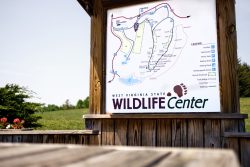SOUTH CHARLESTON, W.Va. – The 2016 “Mast Survey and Hunting Outlook” is now available on the West Virginia Division of Natural Resources website at www.wvdnr.gov. Since 1971, the Wildlife Resources Section, in cooperation with volunteers from numerous other agencies, has conducted a fall mast survey to determine the abundance of mast produced by 18 species of trees and shrubs.
“The availability of fall foods has significant impacts on wildlife populations and hunting season harvests,” said Chris Ryan, supervisor of Game Management Services for the Wildlife Resources Section “Our biologists have used the mast survey data to demonstrate a strong correlation between mast conditions and deer, bear and turkey harvests. Also, the amount of food available each year can affect the reproductive success of many species, which will affect population sizes in following years.”
The survey indicates that production of acorns is better than in 2015 and will have noticeable effects on the 2016–2017 hunting seasons. Black and red oak trees produced mast above the 45-year average. However, because of a reduction in soft mast such as apples, yellow poplar and grapes, overall food conditions are below the long-term average.
“It is very important for hunters to scout and consider the type and amount of food available in the areas where they hunt,” Ryan said. “White and chestnut oak acorns may be very abundant in one location but scarce across the hill. Scouting will play a crucial role in a successful hunt. Hunters can find a wealth of facts in the ‘Mast Survey and Hunting Outlook,’ and it should provide valuable information before they head into the fields.”
The 2016 Mast Survey and Hunting Outlook may be found on the DNR website at www.wvdnr.gov under “Hunting.” Information analyzing mast conditions and wildlife harvests also is available on the website.



